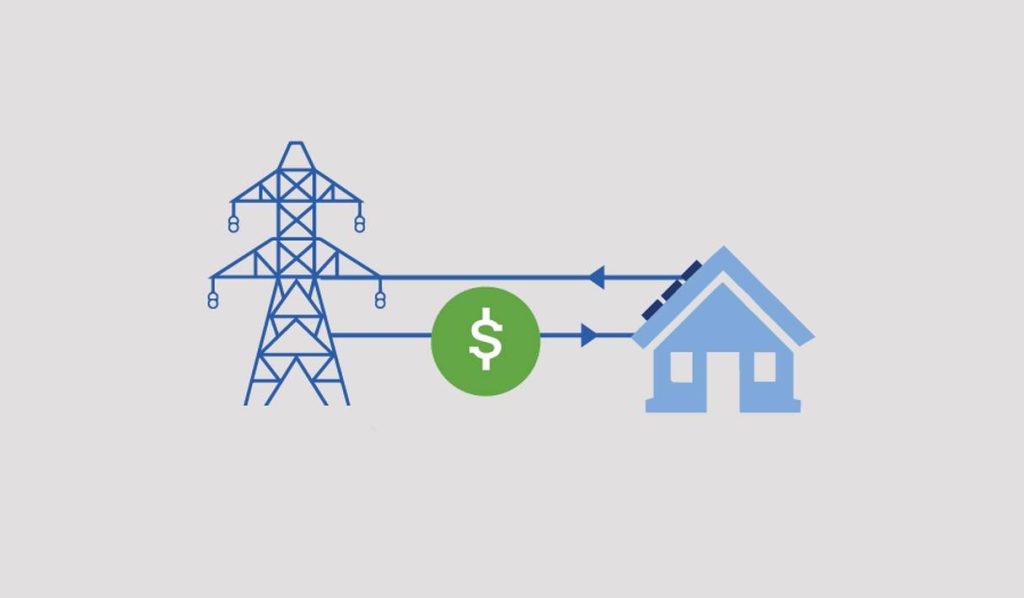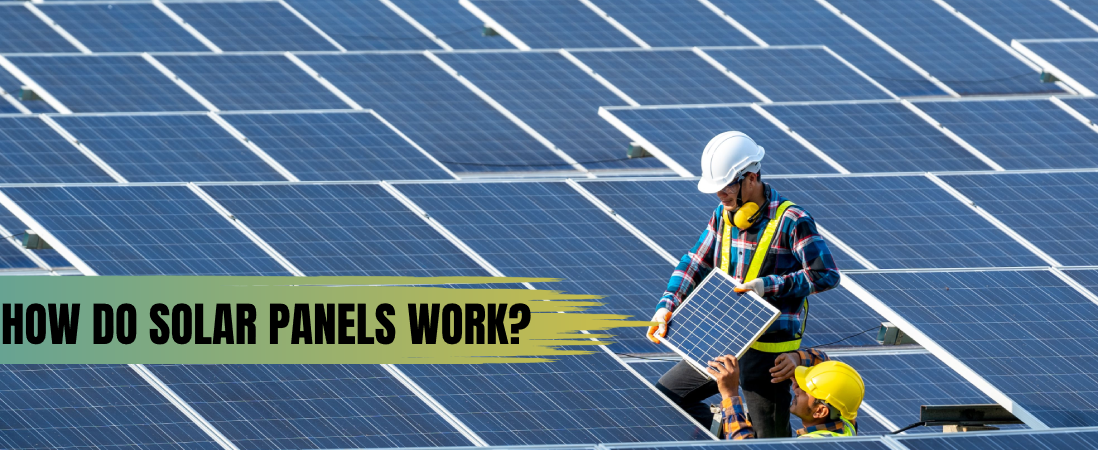
The global community is increasingly adopting renewable energy sources like solar to curb hazardous gas emissions. Solar energy stands out […]

You’ve probably seen solar panels mounted on rooftops and might even have panels installed to supply your own home with green power.
Whether flat and rectangular or cylinder-shaped, solar panels capture the energy from the sun and power the area where they’re installed.
This article explores the science behind the operation of solar panels and their method of extracting energy from sunlight to convert it into useful power.

Initially, solar panels were used on spaceships to harness the sunlight and produce useful energy in space.
Scientists tried to determine ways to make them both lightweight and durable. However, it was challenging to cut the selenium waffles into just the right size in the absence of laser-cutting technology.

Fast forward to the present day, the primary material that makes up new solar panels is silicon.
Not only is it easier to handle, but it’s also more efficient in converting energy into electricity efficiently. Modern photovoltaic cells include:
Silicon is the perfect material for constructing solar panels as it is naturally available, long-lasting, and is capable of converting light into electricity.
The basic working mechanism of a solar panel system involves the following steps;
The main component from the sun’s light that is key for the production of electricity is the photon. Light is made up of photons, which are minute particles that have electromagnetic radiation waves.
When the sun shines, the photons hit the panelboard’s surface, absorbing the energy into the PV cells.
Manufacturers use silicon that has been treated using a nanoengineered reflective coating to ensure that a minimum of 96.21% of the sun’s rays that hit the surface are absorbed.
A reduction in this coating results in less energy absorbed. This technology also reduces the need for automated panels that track the path of the sun and move slowly during the day to keep facing the sun.
The high reflectance helps panels absorb the light from any angle regardless of the time of the day.
Once it captures the light, the anti-reflective layer keeps it from bouncing off of the surface, allowing it to move into the solar cell.
The materials which make up the panelboard have electrons, which are essential for activating solar energy and for flowing electricity.
Each cell within the panel has two silicon layers, one that is positively charged and another which is negatively charged.
Once the semiconducting silicon material absorbs the rays, the photons begin moving within the panel and the electrons in the silicon facilitate this process. As soon as the movement begins, the panels start producing direct current.
Instead of using one module, which will produce a small amount of electricity for lighting a few light bulbs and charging light devices, you can choose an array containing multiple modules.
These will capture more light, and effectively produce a higher quantity of electricity, high enough to power your entire home.
The installation can follow either a parallel or a series arrangement, depending on the current and voltage combination you want to achieve for your home.
An inverter is essential for the delivery and use of the produced energy within your household. The inverter converts the direct current, which is raw and untamed, into an alternate current, similar to the current you typically receive from the utility.
Using the direct current directly for your appliances and devices at home, either fails to operate the devices, and can even damage the appliances.
The specialized system installer should handle the wiring through the converter and the interface with the existing network to maintain a smooth operation and continuous flow of current.
You can use solar energy at home for multiple functions. Solar energy can power up your devices, heat water, illuminate bulbs and even cook your favorite meal in the oven.
However, the amount of energy you produce and the amount that you use are directly proportional to the number of devices operating at a time, and to the total power consumption from these devices.
The amount of energy available is also related to the solar energy available to use. On a bright, sunny day, you will enjoy high amounts of energy production. It is advisable to use high power-consuming machines on such days because the energy production is at its highest.
However, you may need to cut back on your electricity consumption on cold and cloudy days.
One of the items installed with any power connection is the meter. It enables you to monitor how much energy you consume weekly and monthly and can help you manage your expenses.
For a solar system, the meter will work the same way.
It helps you monitor the energy consumption over a set period and determine the patterns of electricity usage. On sunny days when the electricity production goes beyond your need, the solar electricity produced can feed back into your utility company’s grid.
The net meter helps you track how much energy you pulled from the grid versus the amount of energy you put back on the grid. This can give a clear idea of your energy consumption patterns, and also of your gains from feeding solar energy onto the grid.
Solar is one of the cleanest sources of energy. It includes minimal waste production that occurs only during the manufacturing and assembly of the panels. Nevertheless, solar panels have a long lifetime of up to 30 years.
Although solar systems are expensive to install, especially the high-grade modules, the final system greatly reduces your electricity bill. Before installing solar panels, you have to consider the following:
Determining the answers to these questions can guide you towards fully understanding the solar potential at your home. Besides, it can help you plan for the purchase and installation, to catch the best benefits for your solar system.
Solar Solutions at Zero Cost: Government Rebated Installations! Invest in Sunshine with No Upfront Costs.